LC1DT60AED
TeSys Deca contactor , 4P(4 NO) , AC-1 , <= 440V, 60 A , 48V DC standard coil
- Stock status:
- In stock
- Manufacturer:
- Schneider
- Product code:
- LC1DT60AED
Main documents
| Range | TeSys TeSys Deca |
|---|---|
| Range of Product | TeSys Deca |
| Product or Component Type | Contactor |
| Device short name | LC1D |
| contactor application | Resistive load |
| utilisation category | AC-1 |
| Poles description | 4P |
| [Ue] rated operational voltage | Power circuit <= 690 V AC 25…400 Hz Power circuit <= 300 V DC |
| [Ie] rated operational current | 60 A (at <140 °F (60 °C)) at <= 440 V AC AC-1 for power circuit |
| [Uc] control circuit voltage | 48 V DC |
| Compatibility code | LC1D |
|---|---|
| Pole contact composition | 4 NO |
| Protective cover | With |
| [Ith] conventional free air thermal current | 10 A (at 140 °F (60 °C)) for signalling circuit 60 A (at 140 °F (60 °C)) for power circuit |
| Irms rated making capacity | 140 A AC for signalling circuit conforming to IEC 60947-5-1 250 A DC for signalling circuit conforming to IEC 60947-5-1 800 A at 440 V for power circuit conforming to IEC 60947 |
| Rated breaking capacity | 800 A at 440 V for power circuit conforming to IEC 60947 |
| [Icw] rated short-time withstand current | 320 A 104 °F (40 °C) – 10 s for power circuit 720 A 104 °F (40 °C) – 1 s for power circuit 72 A 104 °F (40 °C) – 10 min for power circuit 165 A 104 °F (40 °C) – 1 min for power circuit 100 A – 1 s for signalling circuit 120 A – 500 ms for signalling circuit 140 A – 100 ms for signalling circuit |
| Associated fuse rating | 10 A gG for signalling circuit conforming to IEC 60947-5-1 80 A gG at <= 690 V coordination type 1 for power circuit 80 A gG at <= 690 V coordination type 2 for power circuit |
| Average impedance | 1.6 mOhm – Ith 60 A 50 Hz for power circuit |
| Power dissipation per pole | 5.8 W AC-1 |
| [Ui] rated insulation voltage | Power circuit 600 V CSA Power circuit 600 V UL Signalling circuit 690 V IEC 60947-1 Signalling circuit 600 V CSA Signalling circuit 600 V UL Power circuit 690 V IEC 60947-4-1 |
| Overvoltage category | III |
| Pollution degree | 3 |
| [Uimp] rated impulse withstand voltage | 6 kV IEC 60947 |
| Safety reliability level | B10d = 1369863 cycles contactor with nominal load EN/ISO 13849-1 B10d = 20000000 cycles contactor with mechanical load EN/ISO 13849-1 |
| Mechanical durability | 10 Mcycles |
| Electrical durability | 0.7 Mcycles 60 A AC-1 <= 440 V |
| Control circuit type | DC standard |
| Coil technology | Built-in bidirectional peak limiting diode suppressor |
| Control circuit voltage limits | 0.1…0.3 Uc -40…158 °F (-40…70 °C) drop-out DC 0.75…1.25 Uc -40…140 °F (-40…60 °C) operational DC 1…1.25 Uc 140…158 °F (60…70 °C) operational DC |
| Inrush power in W | 19 W 68 °F (20 °C)) |
| Hold-in power consumption in W | 7.4 W 68 °F (20 °C) |
| Operating time | 50 ±15 % ms closing 16…24 ms opening |
| Time constant | 34 ms |
| Maximum operating rate | 3600 cyc/h 140 °F (60 °C) |
| Connections – terminals | Control circuit: screw clamp terminals 2 0.00…0.00 in² (1…2.5 mm²) – cable stiffness: flexible with cable end Control circuit: screw clamp terminals 1 0.00…0.01 in² (1…4 mm²) – cable stiffness: flexible without cable end Control circuit: screw clamp terminals 2 0.00…0.01 in² (1…4 mm²) – cable stiffness: flexible without cable end Control circuit: screw clamp terminals 1 0.00…0.01 in² (1…4 mm²) – cable stiffness: flexible with cable end Control circuit: screw clamp terminals 1 0.00…0.01 in² (1…4 mm²) – cable stiffness: solid without cable end Control circuit: screw clamp terminals 2 0.00…0.01 in² (1…4 mm²) – cable stiffness: solid without cable end Power circuit: screw clamp terminal 1 0.00…0.05 in² (1…35 mm²) – cable stiffness: flexible without cable end Power circuit: screw clamp terminal 2 0.00…0.04 in² (1…25 mm²) – cable stiffness: flexible without cable end Power circuit: screw clamp terminal 1 0.00…0.05 in² (1…35 mm²) – cable stiffness: flexible with cable end Power circuit: screw clamp terminal 2 0.00…0.04 in² (1…25 mm²) – cable stiffness: flexible with cable end Power circuit: screw clamp terminal 1 0.00…0.05 in² (1…35 mm²) – cable stiffness: solid without cable end Power circuit: screw clamp terminal 2 0.00…0.04 in² (1…25 mm²) – cable stiffness: solid without cable end |
| Tightening torque | Control circuit 15.05 lbf.in (1.7 N.m) EverLink BTR screw connectors flat Ø 6 mm Control circuit 15.05 lbf.in (1.7 N.m) EverLink BTR screw connectors Philips No 2 Power circuit 70.81 lbf.in (8 N.m) EverLink BTR screw connectors 0.04…0.05 in² (25…35 mm²) hexagonal 0.16 in (4 mm) Power circuit 44.25 lbf.in (5 N.m) EverLink BTR screw connectors 0.00…0.04 in² (1…25 mm²) hexagonal 0.16 in (4 mm) Control circuit 15.05 lbf.in (1.7 N.m) EverLink BTR screw connectors pozidriv No 2 Power circuit 22.13 lbf.in (2.5 N.m) EverLink BTR screw connectors pozidriv No 2 |
| Auxiliary contact composition | 1 NO + 1 NC |
| Auxiliary contacts type | Mechanically linked 1 NO + 1 NC IEC 60947-5-1 Mirror contact 1 NC IEC 60947-4-1 |
| Signalling circuit frequency | 25…400 Hz |
| Minimum switching voltage | 17 V for signalling circuit |
| Minimum switching current | 5 mA for signalling circuit |
| Insulation resistance | > 10 MOhm for signalling circuit |
| Non-overlap time | 1.5 ms on de-energisation between NC and NO contact 1.5 ms on energisation between NC and NO contact |
| Mounting Support | Plate Rail |
| Standards | CSA C22.2 No 14 EN 60947-4-1 EN 60947-5-1 IEC 60947-4-1 IEC 60947-5-1 UL 508 IEC 60335-1 |
|---|---|
| Product Certifications | DNV UL LROS (Lloyds register of shipping) RINA GL CCC BV CSA GOST |
| IP degree of protection | IP20 front face IEC 60529 |
| Protective treatment | THIEC 60068-2-30 |
| Climatic withstand | IACS E10 exposure to damp heat IEC 60947-1 Annex Q category D exposure to damp heat |
| Permissible ambient air temperature around the device | -40…140 °F (-40…60 °C) 140…158 °F (60…70 °C) with derating |
| Operating altitude | 0…9842.52 ft (0…3000 m) |
| Fire resistance | 1562 °F (850 °C) IEC 60695-2-1 |
| Flame retardance | V1 conforming to UL 94 |
| Mechanical robustness | Vibrations contactor open 2 Gn, 5…300 Hz) Vibrations contactor closed 4 Gn, 5…300 Hz) Shocks contactor closed 15 Gn for 11 ms) Shocks contactor open 10 Gn for 11 ms) |
| Height | 4.80 in (122 mm) |
| Width | 2.76 in (70 mm) |
| Depth | 4.72 in (120 mm) |
| Net Weight | 2.57 lb(US) (1.165 kg) |
| Category | US10I1222358 |
|---|---|
| Discount Schedule | 0I12 |
| GTIN | 3389118328990 |
| Returnability | No |
| Country of origin | FR |
| Unit Type of Package 1 | PCE |
|---|---|
| Number of Units in Package 1 | 1 |
| Package 1 Height | 2.95 in (7.5 cm) |
| Package 1 Width | 5.51 in (14.0 cm) |
| Package 1 Length | 5.91 in (15.0 cm) |
| Package 1 Weight | 2.43 lb(US) (1.1 kg) |
Product Description
schneider electric
Schneider Electric is a multinational corporation specializing in energy management and automation solutions. With operations in over 100 countries, the company offers a wide range of products and services for various industries, including residential, commercial, and industrial.
Schneider Electric is focused on sustainability and innovation, aiming to help their customers manage energy efficiently and reduce their environmental impact.
schneider contactor
A Schneider contactor is an electrical component that is used to control the flow of electricity in a circuit by opening and closing the contacts to allow or interrupt the current flow.
Schneider Electric is a reputable manufacturer of contactors known for their reliability and efficiency in various industrial applications. These contactors come in different sizes and configurations to meet specific electrical requirements, providing a safe and effective way to manage electricity in machinery and equipment.
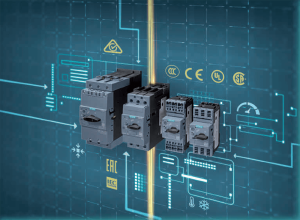
The Schneider Electric LC1DT60AED is a TeSys D series contactor designed for non-inductive load applications up to 60A/690V AC-1. The LC1DT60AED contactor is designed for applications requiring high reliability and durability, with multiple certifications for compliance with international standards.
telemecanique contactor
Telemecanique is a brand that was part of Schneider Electric and is well-known for its industrial control and automation products, including contactors. Just like Schneider contactor, Telemecanique contactor are electrical devices used for switching electrical circuits on and off.
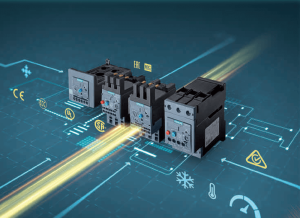
Telemecanique contactor are designed to be reliable, durable, and efficient in controlling various electrical loads, such as motors, lighting systems, heating elements, and more. They come in a range of sizes and configurations to cater to different industrial applications and requirements.
These contactors ensure smooth and safe operation of equipment by allowing for the easy management of electrical power distribution in industrial settings. Telemecanique contactors are known for their quality and adherence to industry standards.
LC1DT60AED
Contactor LC1DT60AED is a TeSys D series contactor suitable for non-inductive load applications up to 60A/690V AC-1, featuring a 48V DC coil with transient suppressor module, 1NO+1NC built-in auxiliary contacts, EverLink BTR screw connectors for power connection, screw clamp terminals for control connection, and a compact design for DIN-rail mounting or screw fixing, providing high reliability and durability for operating rates up to 3600 cycles/hour in environments up to 60°C.
Frequently Asked Questions
what is a contactor?
✅A contactor is an electrical relay used to control a high-power circuit with a lower-power signal. It consists of a coil that, when energized, creates a magnetic field to close or open the contacts within the contactor, allowing or interrupting the flow of electricity to the controlled load.
Contactors are commonly used in applications where high currents need to be switched, such as controlling electric motors, lighting systems, heating elements, and other high-power equipment. They are designed to handle frequent switching and high currents efficiently, making them essential components in industrial and commercial electrical systems.
To read more about contactors and other electrical industrial parts, you can refer to the blog section of GeeTech Group at the following address
what is a contactor used for?
✅A contactor serves as a specialized relay designed to control the opening and closing of electrical circuits. Primarily utilized in conjunction with electric motors and lighting systems, they facilitate efficient switching operations.
Why do we need contactors?
✅A contactor is employed to safely and indirectly manage the operation of high-power electrical equipment, such as motors, fans, and pumps, by interfacing with a PLC. By using a contactor, we ensure the secure control of heavy-duty, high-voltage devices without directly connecting them to the PLC.
What is a contactor vs relay
✅Contactors excel in managing high-current loads, whereas relays are ideal for low to medium-current applications. This contrast stems from their distinct designs, with contactors boasting larger, sturdier auxiliary contacts tailored to handle elevated currents efficiently.
what is a magnetic contactor?
✅A magnetic contactor is an electromechanical device used to control the flow of electricity in an electrical circuit. It consists of a coil that, when energized, creates a magnetic field to close or open the contacts within the contactor.
Magnetic contactors are commonly used in industrial and commercial applications to switch high-power loads, such as electric motors, lighting systems, heating elements, and other electrical equipment. They are known for their reliability, durability, and ability to handle high currents, making them essential components in various electrical control systems.
what is auxiliary contactor?
✅Auxiliary contactors are additional sets of contacts added to a primary contactor to perform auxiliary functions within an electrical control system. These contacts are typically used to provide feedback or signaling, monitor the status of the main contacts, or control auxiliary devices such as indicator lights, timers, or interlocks.
Auxiliary contactors are commonly found in industrial control panels, motor control centers, and other electrical equipment where precise control and monitoring of circuits are necessary. They play a crucial role in enhancing the functionality and safety of electrical systems by providing additional control and feedback options.



















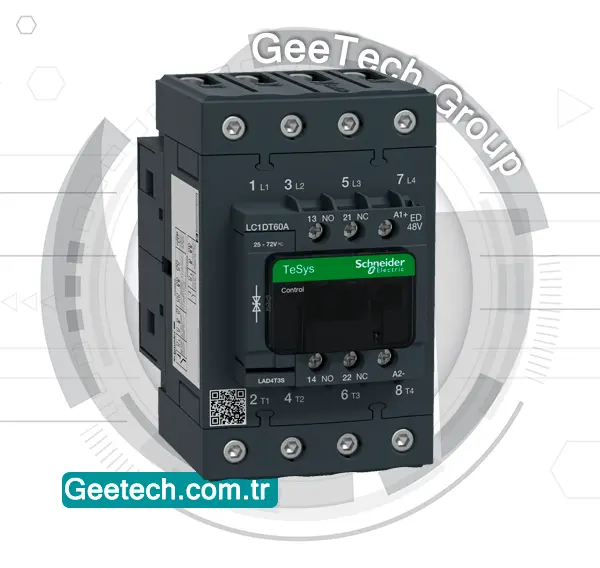
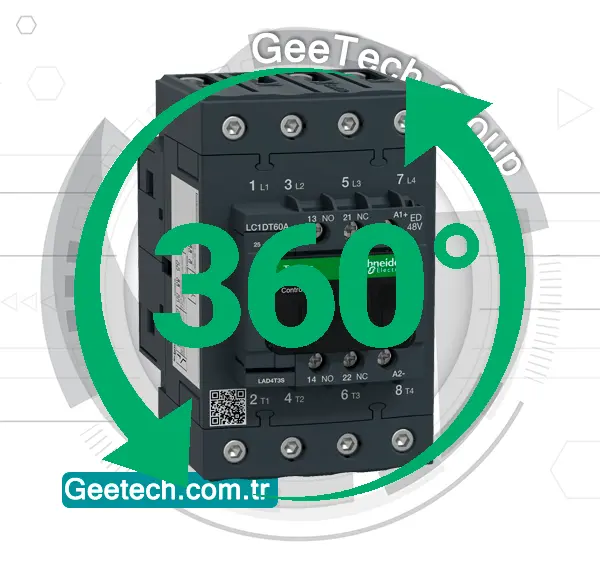
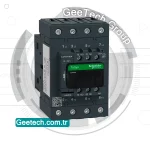
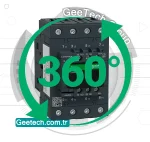
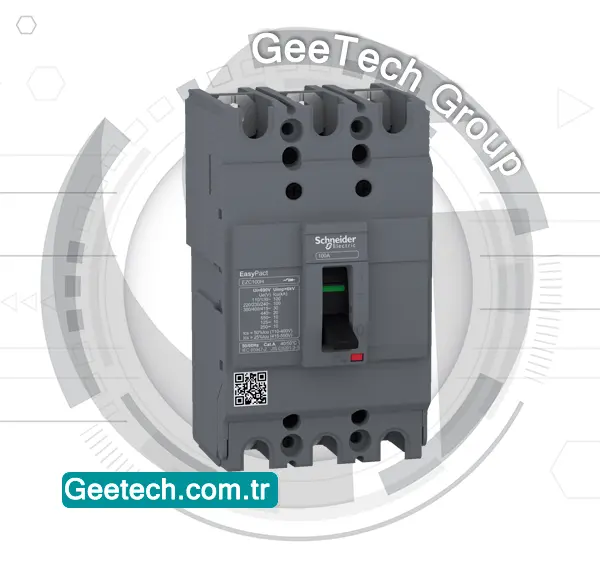
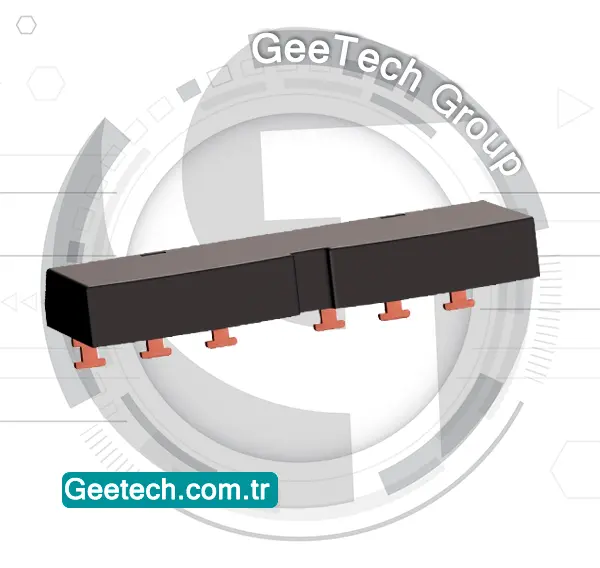
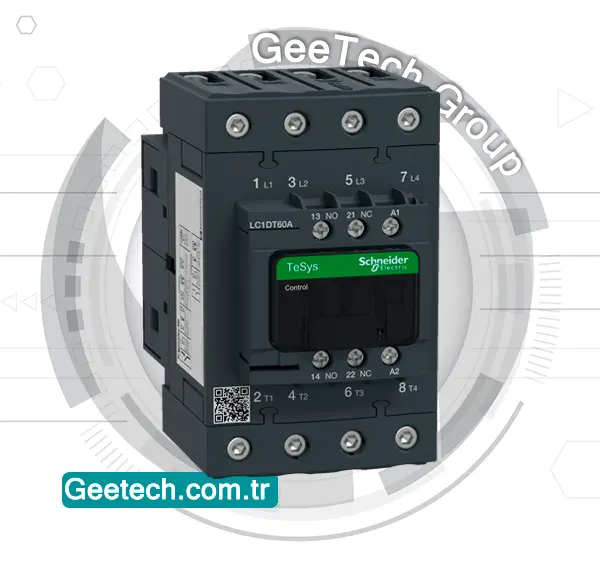
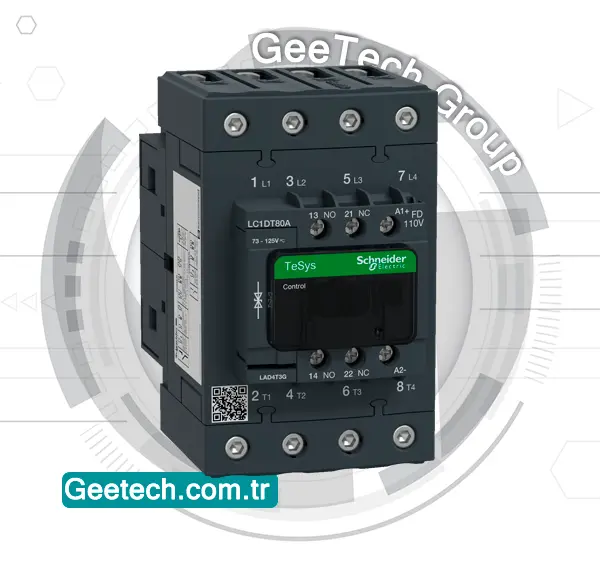

Değerlendirmeler
Henüz değerlendirme yapılmadı.